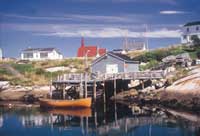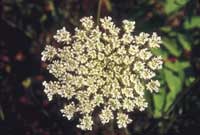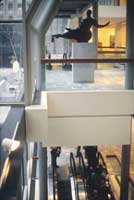Rediscover The 50mm Lens
The Joy And Excitement Of Subjective Photography
The 50mm lens may be the
best focal length in 35mm photography. A good 50mm lens is going to
be sharper than practically any other focal length and it's going
to be free of apparent distortion. It is also generally the fastest
available lens with just about all lens manufacturers, making f/1.4s
and f/1.8s at prices that won't require a second mortgage. Canon
even has a 50mm f/1 at a somewhat pricier level. Another advantage for
the 50mm is its ability to focus down to 17" for close-up photography.
Fifty millimeter macro lenses even have a broader focusing range--infinity
to life size. Macro lenses, from Canon, Minolta, and Nikon, for example,
are slower with apertures of f/2.5 or somewhat smaller. |
|||
The 50mm has long been considered
the normal focal length for 35mm cameras for perhaps the wrong reason.
It is supposed to match the vision of the human eye. Actually, the eye
has a field of view of about 110°, more or less, while the 50mm focal
length covers about 60°. The 50mm lens became the standard lens almost
by default. When Oskar Barnack invented the first Leica, the 50mm focal
length was the only lens that would cover the 35mm format and deliver
acceptably sharp images. And so started a convention and a good one. Actually,
Barnack was a filmmaker of sorts and he developed the Leica 35mm camera
as a means for determining exposure before World War I. It was not marketed
until 1925. |
|||
Henri Cartier-Bresson, one
of the greatest photojournalists of this century and certainly one of
the photographers to raise photojournalism to the level of high art, reputedly
used only the 50mm lens for everything from landscapes to portraiture. |
|||
Combine the zoom, electronic
flash, autofocusing, and autoexposure and, according to award winning
photojournalist Eddie Adams, everyone's pictures look like everyone
else's pictures. |
|||
I have to admit that I am not
exactly deprived. I own lenses from 17-400mm. Recently, I decided that
lugging around a bag full of cameras and lenses was taking the joy out
of image making. As a solution I decided to spend six months using only
a 50mm f/1.4 lens and only basic accessories--a polarizing filter for
color, a yellow filter for black and white, a set of close-up lenses,
and an extension tube that would make life-size images possible. All the
accessories fit into jacket pockets. I also occasionally carried a small,
lightweight tripod when I expected to do close-ups. No camera bag. I photographed
sports, portraits, street life, close-ups, landscapes, and nature using
only the 50mm. I shot by available light and occasionally when the assignment
required, with flash. |
|||
Was I able to shoot everything
with the 50mm? Sports sometimes proved a problem. I tried shooting snowboarders
jumping off a high knoll. I couldn't move in close enough without
risking being hit by a boarder who decided to abandon the jump or lost
control. I did manage to shoot snowboarders performing in a half pipe--a
downhill section with high walls that looked like a pipe cut in half lengthwise. |
- Log in or register to post comments







































